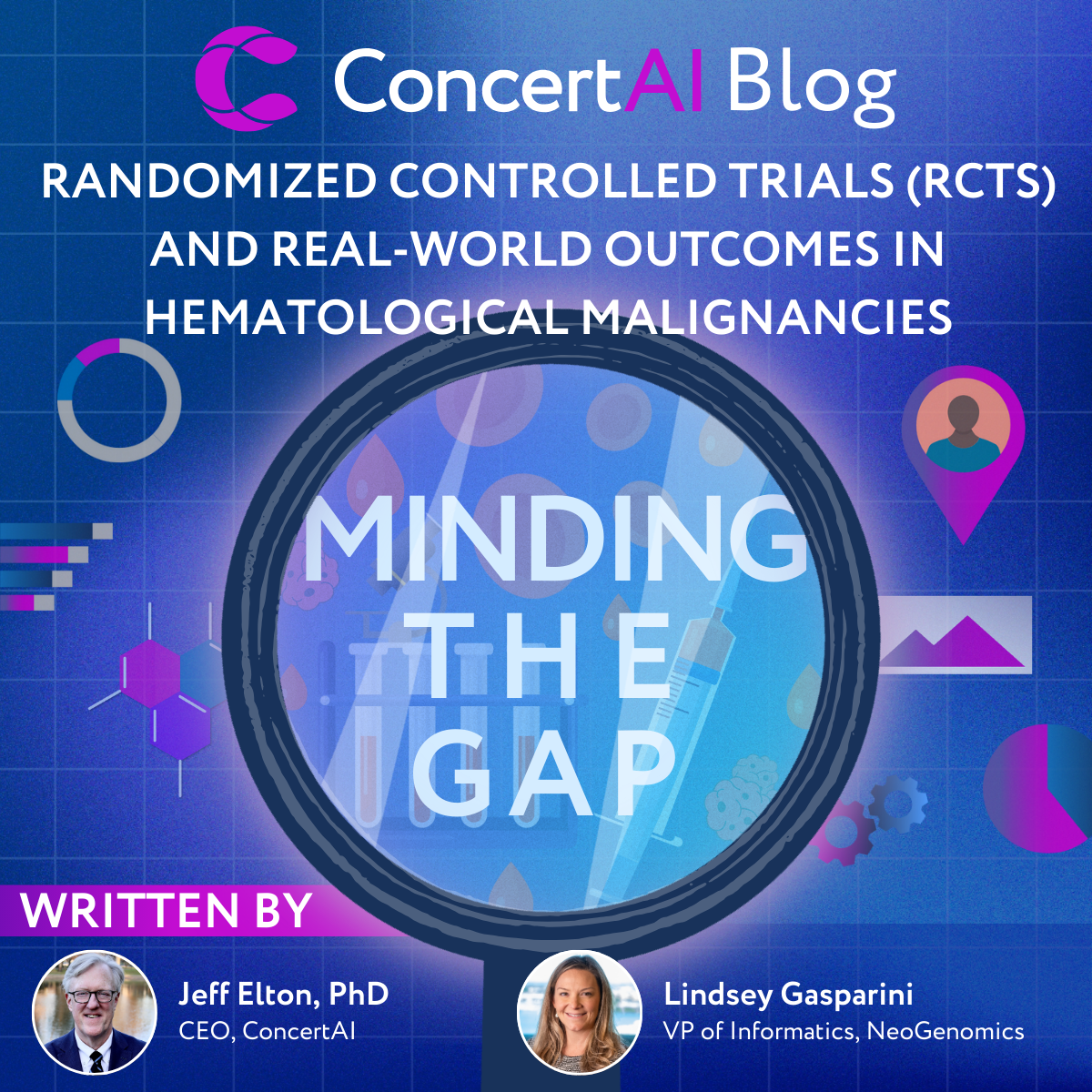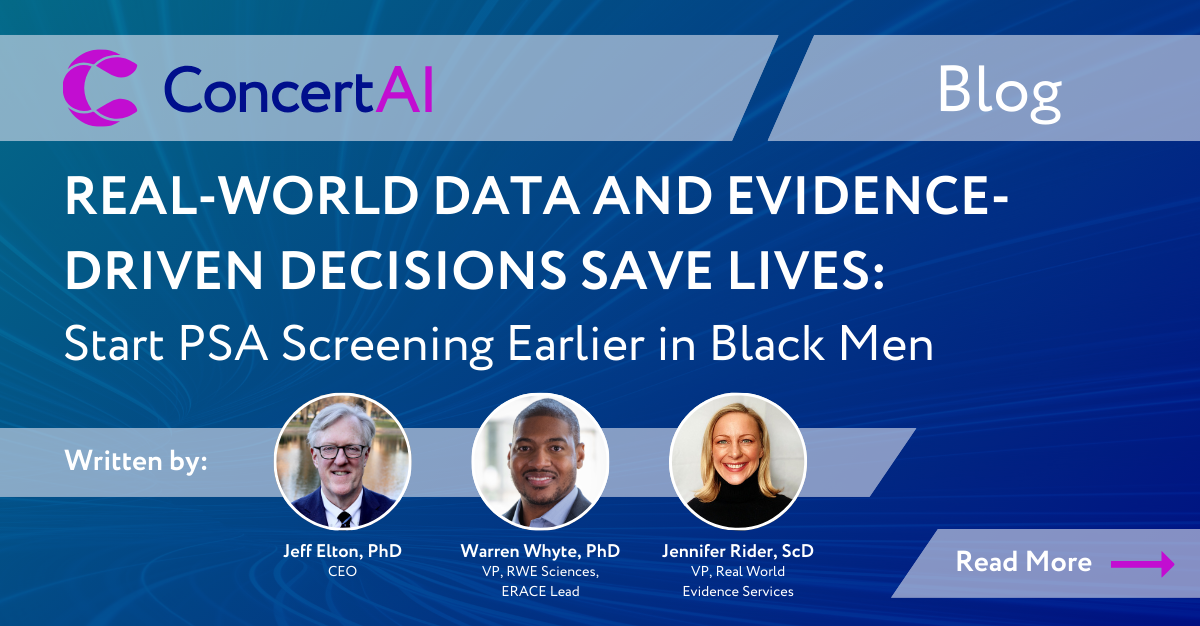Why We Need to Protect Community Oncology from Models Such as White Bagging and View It as the “Next Model” for Care and Biomedical Innovations
Jeff Elton, PhD, CEO, ConcertAI
A few months ago, we wrote a perspective piece on cancer drug shortages, which we view as a national imperative on the order of COVID vaccine development or other national safeguard and preparedness initiatives. While there have been some improvements, problems persist. Now we are taking on another topic, “white bagging.” Just as drug shortages have created risks for patients and ethical dilemmas for physicians, white bagging is placing another drag on the financial viability of community cancer centers and academic providers alike, and creating safety issues for patients.
First some context. The implementation and building of Community Oncology Practices accelerated through the late1990’s and early 2000’s based on variations in “Buy and Bill” reimbursement. The concept was to grow the accessibility of cancer drugs in all communities by enabling payment for services based on the purchase and dispensing of infused and injected oncology therapeutics. This structure created viability for practices in towns and states with limited to no oncology access. It also came with financial risk as the practice had to acquire therapeutics in advance of reimbursement. However, the structure acknowledged that certain technologies and infrastructure would be required, such as specialty pharmacies, compounding, infusion infrastructure, safety monitoring, and advanced electronic records. For example, oncology practices had often adopted oncology-specific EMRs before the HITECH act even required it. While founded on chemotherapeutic administration, this model was no less relevant during the early period of immune-oncology therapeutic adoption and growth (2015-2018 forward). Now, with infused ADCs and other complex solid tumor and hematological malignancy directed therapies, the technical requirements for a practice have increased substantially, as has the investment.
In addition, the role of community centers for biomedical innovation has changed. It has been well documented that the study subjects in most registration clinical trials are not diverse. This creates a number of issues for regulators as they try to determine whether trial data can be generalized to the standard of care population. As such the FDA has issued multiple discussion documents and preliminary guidance for increasing the diversity of clinical trials. This has involved recommendations for broadening eligibility criteria, enrollment practices, and trial designs by considering both demographic characteristics of study populations (e.g., sex, race, ethnicity, age, location of residency) and non-demographic characteristics of populations (e.g., patients with organ dysfunction, comorbid conditions, disabilities, those at the extremes of the weight range, and populations with diseases or conditions with low prevalence). Diversity is often a function of factors that are not evenly distributed across regions of the US, or within rural and urban sites in the same region. The key to accomplishing this is expanding the range of sites accessed and the geographies where those sites are located. Hence the role, again, of community oncology for the advancing biomedical innovations that are critical to saving cancer patient lives.
This brings us to white bagging. Buy and bill fall under a patient’s medical benefit. Therefore, when oncologists purchase drugs from the manufacturer or distributor, they receive reimbursement from the insurance company for both the cost of the drug as well as for administering it to patients. With white bagging, drugs fall under a patient’s pharmacy benefit. Therefore, it is often a specialty pharmacy that prepares the infused or injected drugs ahead of the administration date and ships it directly to the oncology clinic. After administration, the specialty pharmacy receives reimbursement for the drug. Oncologists are only reimbursed for administering the drug. The net effects of this are that the “margin” that once went to the oncology practice delivering the care now goes to the specialty pharmacy company. As drug administration fees have declined significantly over the last few years, many community oncology practices have been able to absorb infusion operations that operated at or below their costs because of the drug margins. So, this is a sort of double negative hit. Adam J. Fein, PhD, of Drug Channels Institute, found that white bagging accounted for 17% of infused oncology product sourcing from clinics and 38% from hospital outpatient departments in 2023, up from 15% to 28% (respectively) in 2019.
This system was originally justified as a means of lowering patient-responsible portions of cost for expensive oncology and specialty therapeutics. Insurance companies see white bagging as reducing patients’ costs net of reimbursed costs “by preventing hospitals and physicians from charging exorbitant fees to buy and store specialty medicines themselves,” according to advocacy group America’s Health Insurance Plans (AHIP). This same analysis found that hospitals marked up therapeutics’ costs by 2x, and outpatient and community centers by an average of 23%. The analysis focused on how much insurers were billed and not the next actual paid by patients. An important analysis in JAMA by two authors from UCLA noted that out-of-pocket costs were in fact higher for patients under white bagging than under traditional buy and bill.
Good intentions can sometimes have unintended consequences. White bagging is weakening the exact infrastructure we need to assure access to care and clinical trials. There are perspectives that the only beneficiaries are corporate entities and their subsidiaries administering these programs. There is limited to no evidence that it produces lower costs for patients – the goal that unpinned the model. It has been seen as impractical for how medical oncology functions in practice, for example the need to modify treatment regimens, dosing schedules and levels, and sometimes even treatment plan modifications with specific disease progression over the course of treatment. It is unusual that the interests of community and academic providers converge, but white bagging is just such an area. The concerns over white bagging have advanced far enough in some states that Louisiana, Vermont, and Minnesota were the first to enact anti–white bagging laws. More are following. Finally, anything that weakens the positive trend towards building research capacity and capabilities in the community further limits options for patients, hinders the ability to have more diverse trial participation, and slows the medical innovations patients need.
We are always looking for the model of “what’s next” in healthcare. We believe we have it in the rapidly emerging next generation of flexible, multi-modality, multi-therapeutic, multi-diagnostic, and research-centric community providers. It’s a model that is increasingly moving towards value-centric care, is accessible, and can configure to the care requirements of its community and patients.

